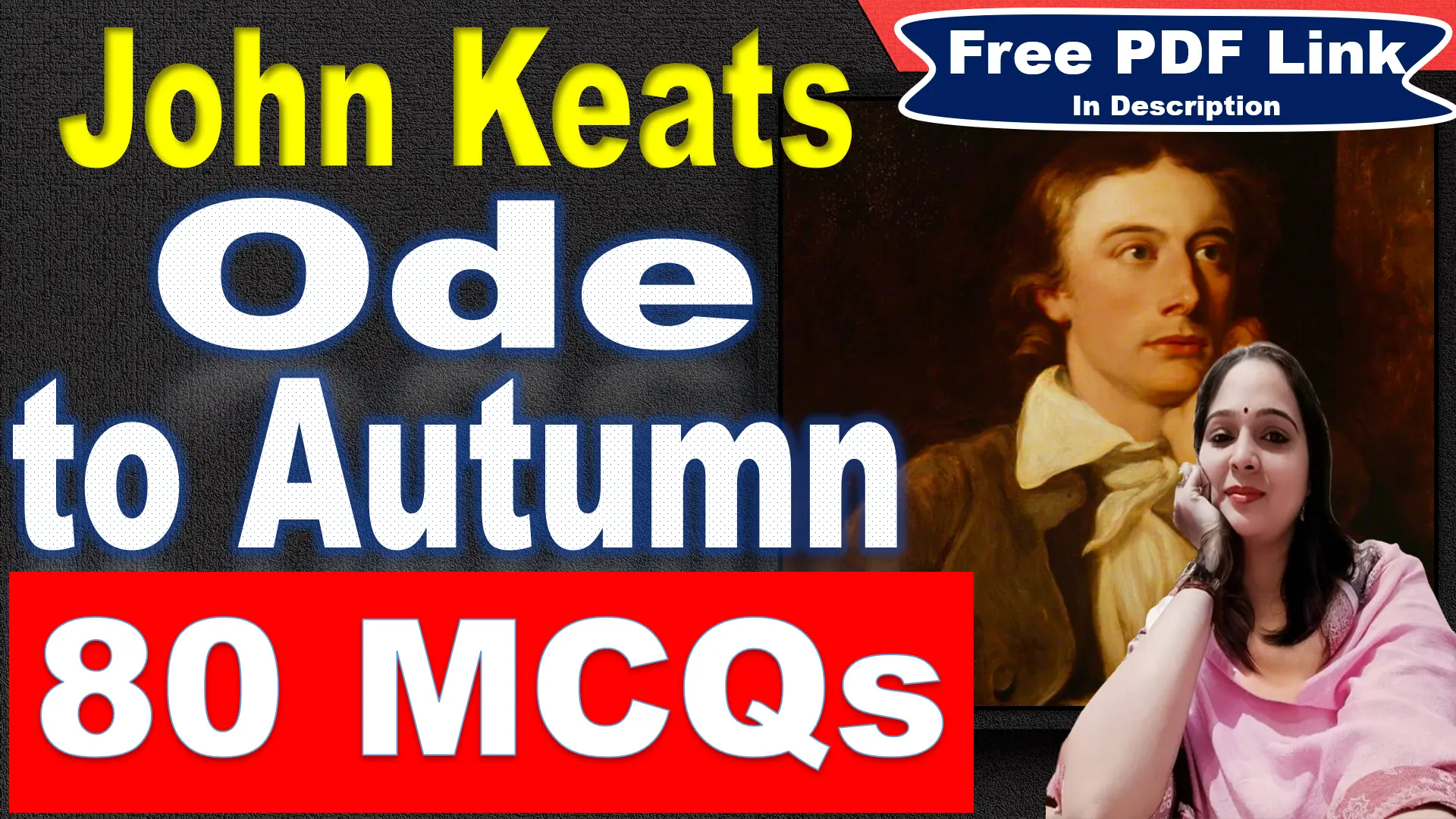The Second Coming by William Butler Yeats | The Second Coming | William Butler Yeats | Explanation | Summary | Key Points | Word Meaning | Critical Appreciation | Questions Answers | Free PDF Download – Easy Literary Lessons
The Second Coming
(William Butler Yeats)
Turning and turning in the widening gyre
The falcon cannot hear the falconer;
Things fall apart; the centre cannot hold;
Mere anarchy is loosed upon the world,
The blood-dimmed tide is loosed, and everywhere
The ceremony of innocence is drowned;
The best lack all conviction, while the worst
Are full of passionate intensity.
Surely some revelation is at hand;
Surely the Second Coming is at hand.
The Second Coming! Hardly are those words out
When a vast image out of Spiritus Mundi
Troubles my sight: somewhere in sands of the desert
A shape with lion body and the head of a man,
A gaze blank and pitiless as the sun,
Is moving its slow thighs, while all about it
Reel shadows of the indignant desert birds.
The darkness drops again; but now I know
That twenty centuries of stony sleep
Were vexed to nightmare by a rocking cradle,
And what rough beast, its hour come round at last,
Slouches towards Bethlehem to be born?
The Second Coming by William Butler Yeats: YouTube Link
The Second Coming Analysis
Turning and turning in the widening gyre
The falcon cannot hear the falconer;
Explanation: The image of the falcon flying in ever-widening circles and losing touch with its handler symbolizes a loss of control and a breakdown of communication between guiding principles and the world. This reflects the disintegration of societal structures and order.
Poetic devices
Symbolism: The falcon and falconer symbolize order and control. The falcon flying out of hearing range represents the breakdown of this control.
Imagery: The image of the falcon in a widening gyre creates a visual representation of chaos and loss of direction.
Paradox: The falcon’s inability to hear its own master disrupts the natural order.
Enjambment: The line continues without pause, emphasizing the relentless turning.
Things fall apart; the centre cannot hold;
Explanation: This line suggests that the core or foundation of society is collapsing. The “centre” represents stability and order, which are now failing, leading to chaos and fragmentation.
Poetic Device
Chiasmus: The reversal of words (“fall apart” and “centre cannot hold”) creates balance and tension.
Metaphor: “Centre” represents stability or societal cohesion. “The centre cannot hold” serves as a metaphor for the collapse of societal and moral structures.
Mere anarchy is loosed upon the world,
The blood-dimmed tide is loosed, and everywhere
The ceremony of innocence is drowned;
Explanation: Anarchy, characterized by disorder and violence, is spreading globally. The “blood-dimmed tide” indicates widespread bloodshed and destruction. The “ceremony of innocence” being drowned symbolizes the loss of purity, morality, and civilized behavior.
Poetic Device
Visual Imagery: The “blood-dimmed tide” evokes violence and destruction.
Symbolism: “Ceremony of innocence” represents purity or order.
Enjambment: The lines flow together, emphasizing the relentless upheaval.
The best lack all conviction, while the worst
Are full of passionate intensity.
Explanation: In this chaotic world, those who are morally good or wise are uncertain and inactive, whereas those who are wicked or fanatical are fervent and forceful. This contrast underscores the dangers of moral apathy and the rise of dangerous ideologies.
Poetic Device
Antithesis: The contrast between “the best” who lack conviction and “the worst” who are intensely passionate highlights the moral imbalance in the world.
Irony: The best lack conviction despite their virtues.
Surely some revelation is at hand;
Surely the Second Coming is at hand.
Explanation: The speaker anticipates a significant revelation or divine intervention, specifically the “Second Coming,” a reference to the return of Christ as prophesied in Christian eschatology. This suggests a moment of profound change or judgment is imminent.
Poetic Device
Symploce: The combination of anaphora and epiphora (that is, the repetition of words or phrases at both the beginning and end of successive clauses) is called symploce.
Allusion: “The Second Coming” alludes to Christian eschatology, specifically the anticipated return of Christ.
The Second Coming!
Explanation: The exclamation emphasizes the urgency and magnitude of this anticipated event. It marks a turning point in the poem, shifting from describing chaos to contemplating what will emerge from it.
Poetic Device
Exclamation: The use of an exclamation mark adds emphasis and urgency to the declaration, indicating a significant and dramatic event.
Biblical Allusion: Refers to the return of Christ.
Hardly are those words out
When a vast image out of Spiritus Mundi
Troubles my sight:
Explanation: As soon as the speaker mentions the Second Coming, a troubling vision appears from “Spiritus Mundi,” the collective spirit or world soul. This vision suggests a profound, possibly ominous, collective experience or revelation.
Poetic Device
Caesura: The pause after “out” creates a dramatic effect, marking a sudden shift to the visionary experience.
Allusion: “Spiritus Mundi” refers to the collective soul of the world, suggesting a universal, shared vision or archetype.
Imagery: The “vast image” evokes a strong visual impression, preparing the reader for the coming description.
somewhere in sands of the desert
A shape with lion body and the head of a man,
A gaze blank and pitiless as the sun,
Is moving its slow thighs, while all about it
Reel shadows of the indignant desert birds.
Explanation: The speaker describes a monstrous figure with a lion’s body and a man’s head in a desert, symbolizing a powerful and inhuman force. Its “blank and pitiless” gaze suggests a lack of compassion. The slow movement and the circling birds create a sense of dread and impending doom.
Poetic Device
Imagery: The detailed description of the beast with a lion’s body and a man’s head creates a vivid and unsettling picture.
Simile: “A gaze blank and pitiless as the sun” compares the creature’s gaze to the sun, emphasizing its merciless nature.
Symbolism: The beast symbolizes a new, ominous force emerging from chaos.
Personification: The shadows of the desert birds are described as “indignant,” attributing human emotions to them.
The darkness drops again; but now I know
That twenty centuries of stony sleep
Were vexed to nightmare by a rocking cradle,
Explanation: As darkness returns, the speaker realizes that two thousand years of relative stability (since the birth of Christ) have been disturbed by this new, nightmarish force. The “rocking cradle” signifies the birth of something new and terrible, disrupting the long period of calm.
Poetic Device
Alliteration: The repetition of the “d” sound in “darkness drops” adds a rhythmic quality to the line.
Metaphor: “Twenty centuries of stony sleep” metaphorically describes a long period of dormancy or stability.
Paradox: The juxtaposition of “stony sleep” and “rocking cradle” contrasts the inert past with the disturbing present.
Personification: The centuries are described as being “vexed to nightmare,” attributing them human-like reactions.
And what rough beast, its hour come round at last,
Slouches towards Bethlehem to be born?
Explanation: The “rough beast” represents this new, malevolent force whose time has come. Its slow, deliberate movement towards Bethlehem (the birthplace of Christ) suggests the birth of a new era, one that is dark and foreboding, in contrast to the hopeful promise of the original nativity.
Poetic Device
Rhetorical Question: The question invites the reader to ponder the nature of the emerging force.
Symbolism: The “rough beast” symbolizes a new and troubling era.
Personification: The beast “slouches,” giving it a human-like movement that conveys a sense of inevitability and menace.
Allusion: “Bethlehem” alludes to the birthplace of Christ, creating a contrast between the hope of the first nativity and the dread of this new birth.





